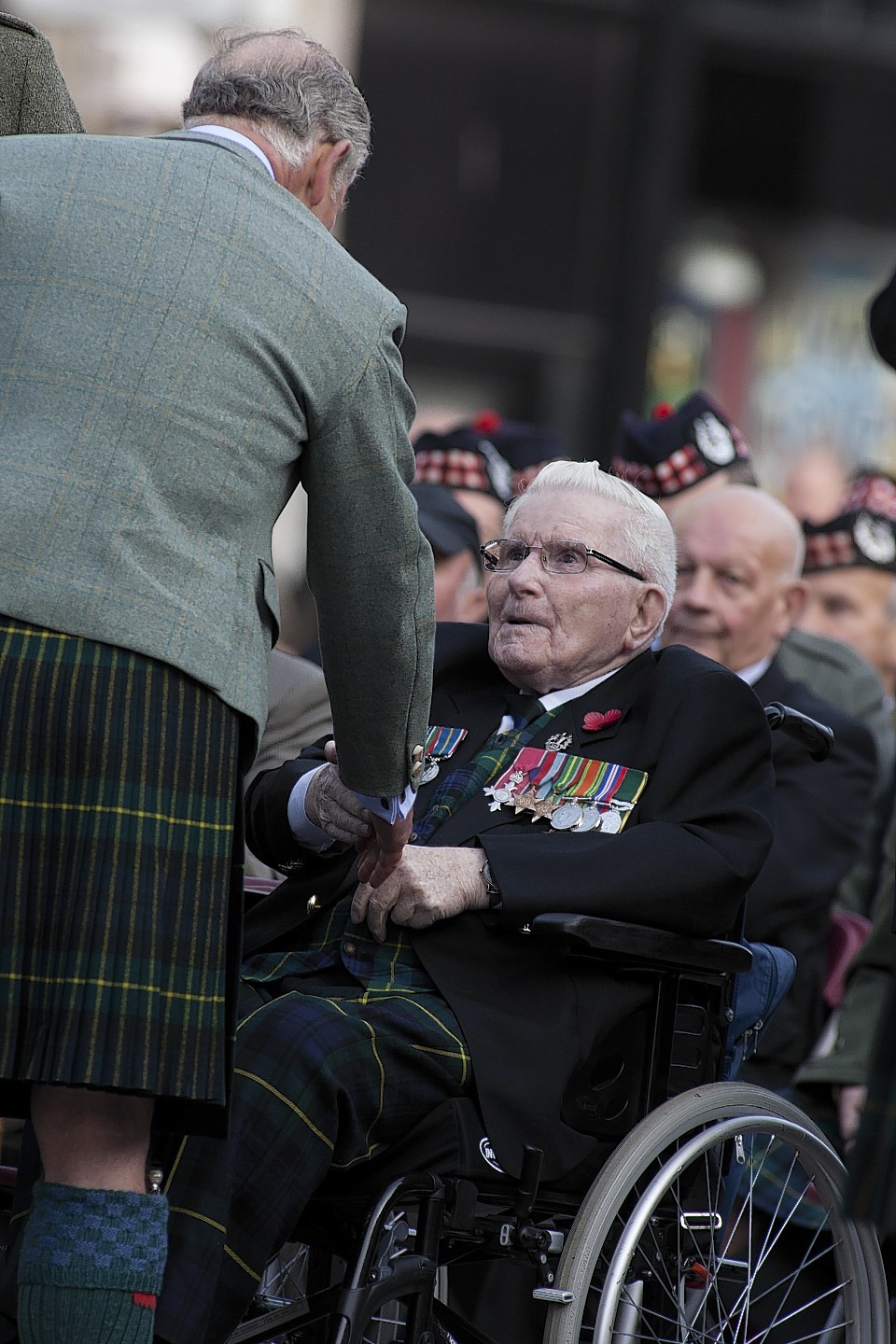One of the last Gordon Highlanders to have survived the nightmarish construction of the “Death Railway” has died – almost 73 years after he was captured by the Japanese.
Born in Cuminestown on November 21, 1920, James “Jimmy” Scott left school aged 14 and worked as a lambing shepherd, a farm worker and a joiner before signing up to the Territorial Army.
Following the outbreak of World War II he was called-up to the front line with the 6th Battalion Gordon Highlanders to assist the regiment’s 1st Battalion in France.
His war was almost over during the Dunkirk evacuation when a Luftwaffe warplane opened fire on the rescue ship he was on.
Mr Scott ducked for shelter under piping, and was hit by shrapnel. He returned to spend two weeks at the Gordon Highlander’s Bridge of Don barracks before being declared fit for active duty again.
It was the last time he would set foot on Scottish soil for another three-and-a-half years.
Mr Scott was posted to Singapore with the Gordon Highlanders’ 2nd Battalion and before long found himself defending the “British Fortress” from Japanese invaders.
Following fierce fighting against enemy troops expert in jungle combat, British forces surrendered on February 15, 1942 in what Winston Churchill labelled the “worst moment of the war”.
Mr Scott and his fellow allied soldiers were sent to Changi prison camp, where the Japanese army soon found a use for them and put them to work building the “Railway of Death”.
Years later, he recalled the horrific conditions the men encountered.
“We were told we were going to Thailand to holiday camps – ‘no work – plenty rest’,” he said.
“We started clearing a strip through the jungle, cutting down trees and levelling out a track back towards the River Kwai.
“All we had to eat was rice, three times a day, with a little dried fish or meat. We were eating dogs and snails. In one camp they were breeding rats to eat.
“When we came to a rocky hill, there was no machinery to drill holes for blasting, all the drilling was done by hand.”
Some 300,000 people were involved with the building of the railway stretching from Nong Pladuk, Thailand, to Thanbyuzayat, Burma, between 1942-43.
Of those, more than 100,000 died, earning the track the title of the “Death Railway”.
The workforce was made up of local Asian labourers and about 13,000 allied prisoners of war, overseen by the often-brutal railway regime of the Japanese Imperial Army.
Work on the 261-mile railway – which included Hellfire Pass and the Bridge over the River Kwai – was dreadful for the malnourished PoWs who grafted with hoes, shovels and picks in unbearable jungle heat.
Mr Scott recalled how the smallest wound on the skin could lead to a tropical ulcer, the most severe of which lead to amputations by way of a “joiner’s saw”.
Those who didn’t starve to death suffered malaria, dysentery, pneumonia, vitamin deficiency and following the monsoon of 1943 cholera was added to the mix.
At the bridge itself Mr Scott recalled seeing men lose their lives as they fell into the waters and were swept away.
The remainder of the dead were cremated when burying them became too time consuming.
Three-and-a-half years after his capture and weighing just six-and-a-half stone, he was finally liberated and returned to the north-east.
He settled into life in Turriff and worked at the town’s Crichton and Sons before getting a job as a linesman for the GPO – where he worked for almost 30 years.
Mr Scott lived in Turriff for the rest of life and had six children with his wife Elizabeth, whom he married in 1947.
He devoted his life to helping others in the community and received an MBE in 1998 for his service to the Royal British Legion.
He was also one of the founders of Turriff citizen’s advice organisation, Traice, as well as being a respected local entertainer, singer and volunteer driver with Turriff Day Care.
Daughter, Evelyn Thomson, said: “He helped with all the groups in Turriff. He was a great entertainer. He just kept us together.”
In later years Mr Scott returned to the countries where he suffered as a PoW to pay his respects to “those who were burned or buried in the jungle somewhere up and down in the vicinity of the railway.”
He recalled: “We went over the new steel and concrete bridge over the River Kwai and what a feeling of disappointment to see all that was left of the infamous wooden bridge.
“I didn’t know if I felt happy or sad, sad I think. It was a sad feeling because it brought back memories of all the young lives that were lost building it.”
Mr Scott died on Saturday, February 7, aged 94 at Aberdeen Royal Infirmary and his funeral was held today.
